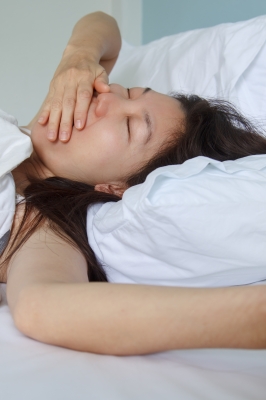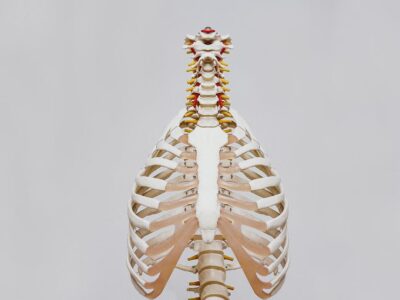How To Sleep Better: The Best Sleeping Position For Scoliosis Patients
Your backbone is essential in holding your body upright. If it is not in good condition, you wouldn’t be able to walk, run, or do any physical activities.
Normally, if you look at yourself sideways in the mirror, you will notice that your back curves in and out between your neck and lower back. A healthy spine should look straight down the middle of your back; however, if you notice that your spine curves from side to side, you might have scoliosis.

image courtesy of tiverylucky/freedigitalphotos.net
What Is Scoliosis?
Scoliosis is not a disease. It is a medical condition wherein the spine rotates, twists, or curves. It is used to describe any abnormal curvature of the spine. When scoliosis occurs:
- Levoscoliosis: The spine curves to the left.
- Dextroscoliosis: The right curvature of the spine.
- The spine has two curves, forming the letter “S”.
Other outward symptoms may include:
- Uneven shoulder or hip. The other side appears higher
- A sunken or uneven shape of the chest
- One leg looks shorter than the other
The scoliosis patient may also suffer from fatigue due to difficulty sleeping, breathing problems, tingling or numbness in the leg area, and heart problems. If you or you know someone who is diagnosed with scoliosis, it is very important to find ways to stay comfortable while sleeping. Although bad sleep posture will not worsen the condition, it can cause fatigue and more pain. A good sleep position can relieve pain and reduces fatigue caused by scoliosis.
Recommended Sleep Position For Scoliosis Patients
It is advisable to avoid sleeping on your stomach if you are suffering from scoliosis. This sleep position arches the back; therefore, it contributes to your discomfort while you sleep. The best sleep position is to lie on your back to make sure that your spine is kept in a straight position with your arms out to your sides. It is best to place a small pillow under your knees or legs.
If you are sleeping on your back, Parklane Mattresses recommends sleeping on a medium-firm mattress. Avoid very stiff innerspring mattresses since this type of bed will push against your spine; thus it can’t provide you with the right support. In addition, you should also avoid sleeping on a mattress that is too soft because it won’t provide enough support for your body and back.
Lastly, if lying on your back is no longer comfortable, you can sleep on your side. Place a pillow between your legs. Doing so will help open up the spinal canal. In addition, you can place a small pillow under your upper ribcage. This will help correct your abnormal spinal curvature while you sleep. But before you manipulate your spine while you sleep, you should first consult with your physician. You need to understand that certain forms of scoliosis can affect your spinal cord nerves which might affect your overall health, such as decreasing the flow of the blood and spinal fluid. The physician might be able to recommend the right sleeping position to help alleviate your discomfort and pain.
Additional Tips For Living With Scoliosis
- Keep moving: You should avoid standing or sitting in one position for a long time. It is best to move your body around.
- Don’t carry heavy objects: Avoid carrying heavy loads. The increased weight will not only make the gravitational pull much worse on your spine, but it will also compress your spine further.
- Seek help: You should have an expert look into your condition. Learn about your options and their risks.
- Stretch daily: Stretching can help relieve pain and discomfort.
The author, Kris Hopkins, is a registered nurse. She aims to raise awareness regarding scoliosis and offers tips for scoliosis patients.













